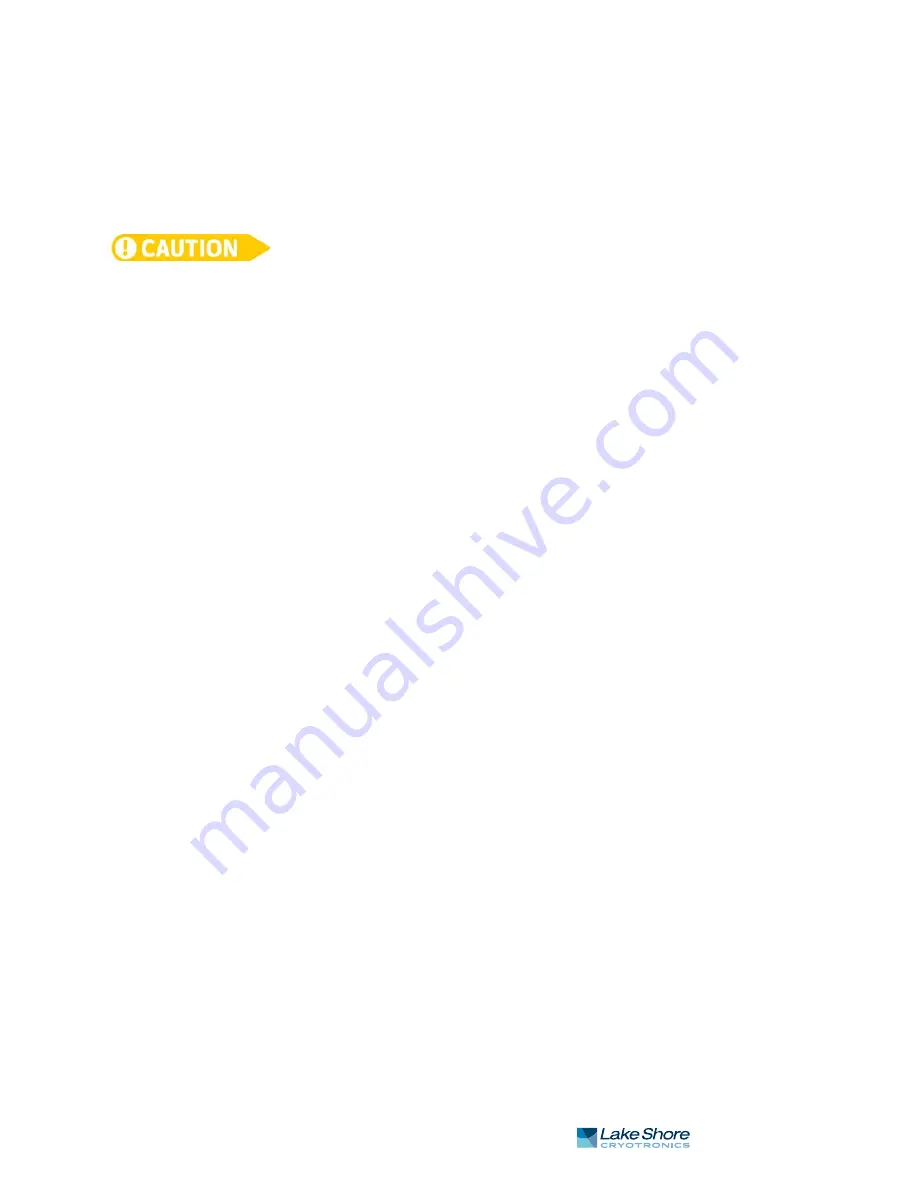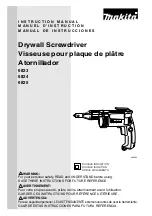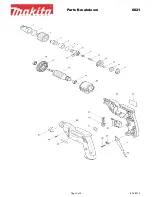
129
|
www.lakeshore.com
6.2.4 Viewport Window
Maintenance
Viewport windows require extra consideration. It is important to protect the optics as
they are your only way to view and photograph the activity on the sample holder.
6.2.4.1 Cleaning the Viewport Windows
The viewport windows on the radiation shield lid and vacuum chamber lid will need
cleaning, as they collect debris and smudges during normal operation. Use cleaners
recommended for glass optics. A suggested cleaner is Eclipse® High Purity Cleaning
Fluid, available through Edmund Optics.
Never use household cleaners on the optics windows; some optics may be damaged by the
chemicals in these cleaners.
6.2.4.2 De-fogging the Viewport Windows
Some condensation on the
outside
of the vacuum chamber lid viewport windows is
normal; however, if there is condensation on the inside of the vacuum chamber lid
viewport windows or anywhere on the radiation shield lid, this is a sign of poor
vacuum. Refer to section 6.3.1. When the outside of the vacuum chamber viewport
window develops condensation during low temperature operation, it is an indication
that it needs to be treated with anti-fog solution. A suggested anti-fog solution is
Parker’s™ Perfect anti-fogging solution, available through Edmunds Optics.
Follow this procedure to defog the outside surface of the vacuum chamber viewport
windows.
1. Apply anti-fog solution to a small, folded, optical cloth.
2. Wipe onto the surface of the viewport using a circular and overlapping motion.
3. Allow the solution to dry until a slight haze appears.
4. Apply a second coat using a new cloth and fresh solution to ensure complete and
uniform coverage.
5. Remove the final haze with a clean, dry cotton cloth.
6.2.5 O-Ring
Maintenance
O-rings are generally reliable and require very little maintenance. Periodic cleaning
and re-greasing is all that is necessary under most circumstances. This is especially
true of the vacuum chamber lid o-ring that is located where it can be contaminated
with debris. Other o-rings will require routine maintenance only if their seal is broken
regularly to reconfigure the probe station.
6.2.5.1 Re-greasing O-Rings
Follow this procedure to re-grease o-rings. Wear nitrile gloves during this procedure.
1. Remove the o-ring using the plastic o-ring removal tool provided in the tool kit.
2. Clean off any old grease with a lint-free wipe and isopropyl alcohol.
3. Clean the o-ring groove and mating surface with a lint-free wipe and
isopropyl alcohol.
4. Inspect for small cuts or nicks; if you find any, replace the o-ring immediately.
5. Inspect for excessive flattening; replace immediately if found.
6. Place a small amount of high quality vacuum grease, such as Apiezon® N grease
on one (gloved) finger.
7. Run the o-ring through your fingers until the entire surface is lightly coated.
8. Remove any excess grease.
9. Replace the o-ring in the o-ring groove; do not allow the o-ring to twist
in the groove.
















































